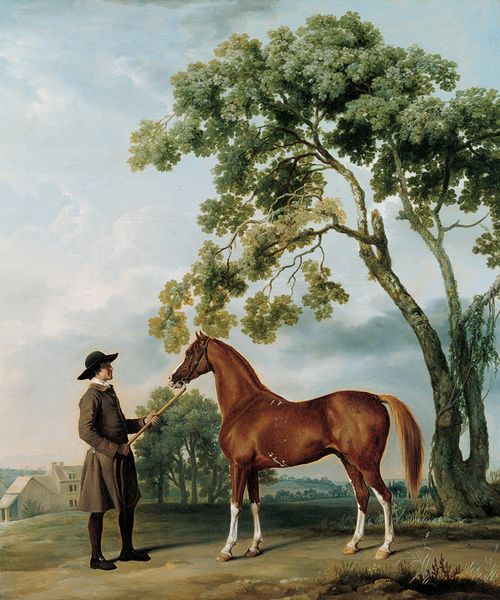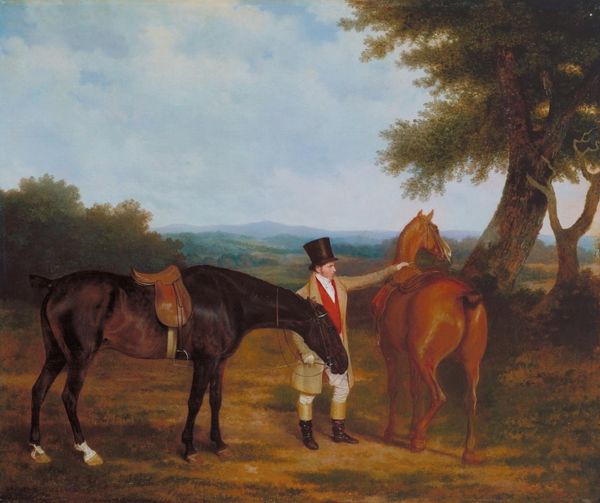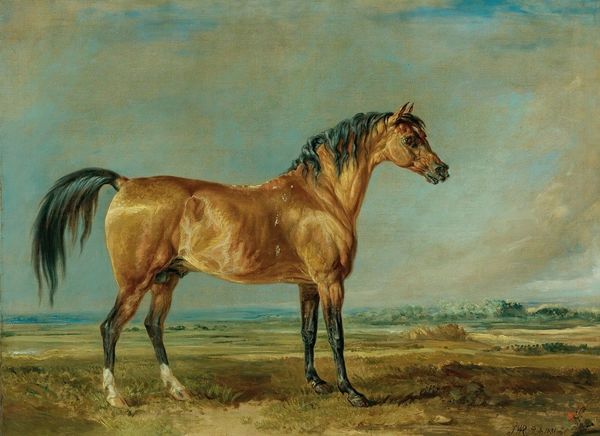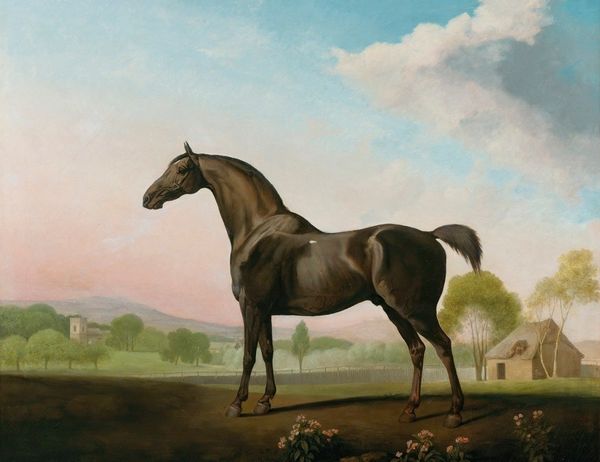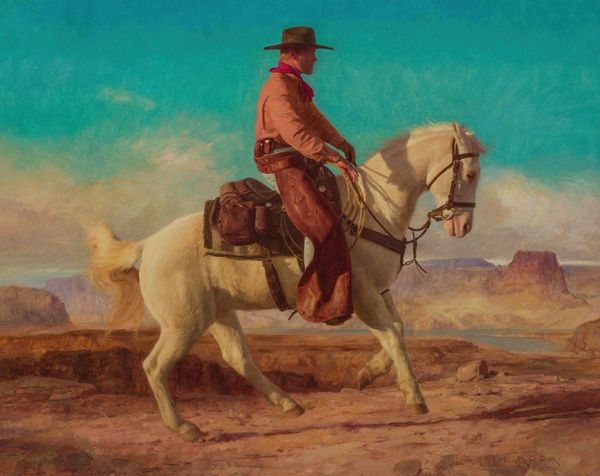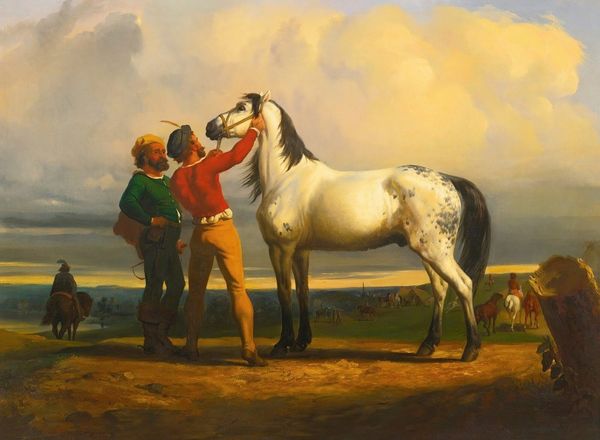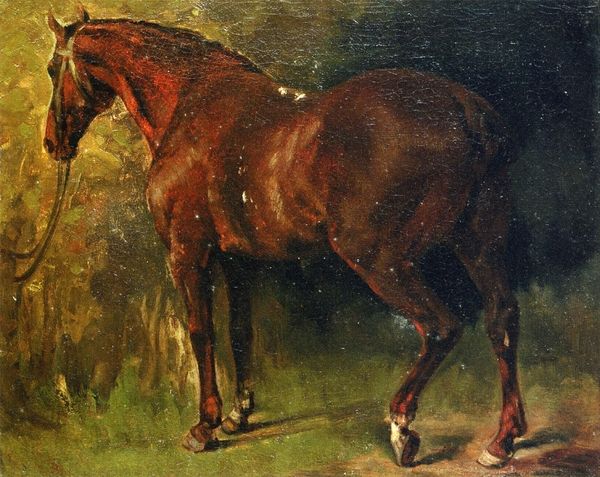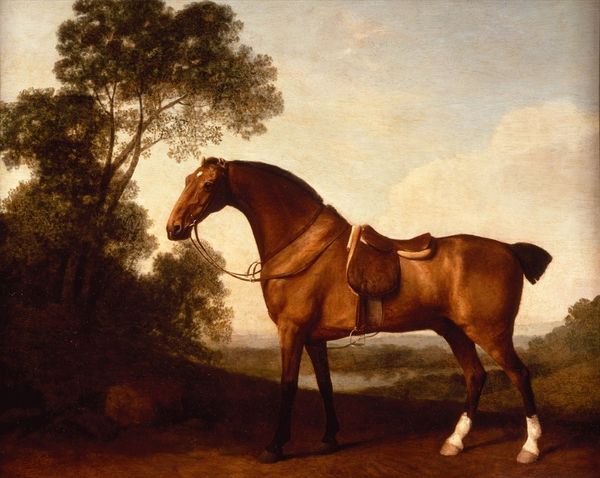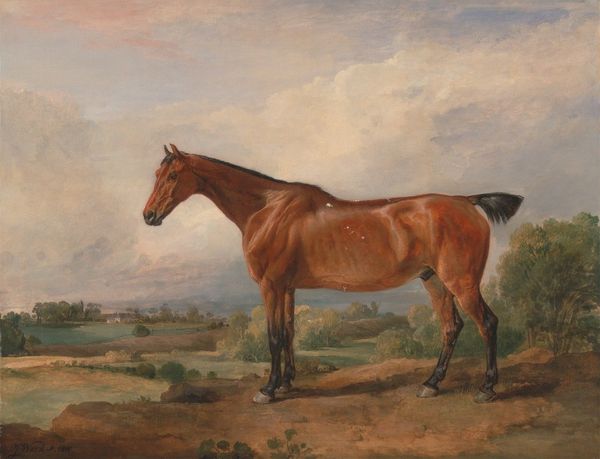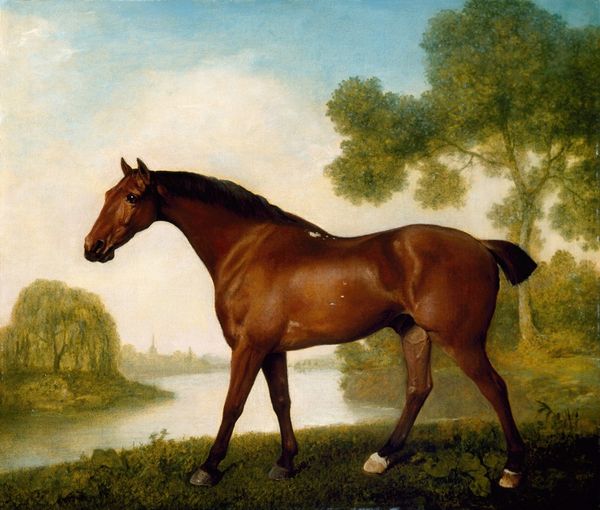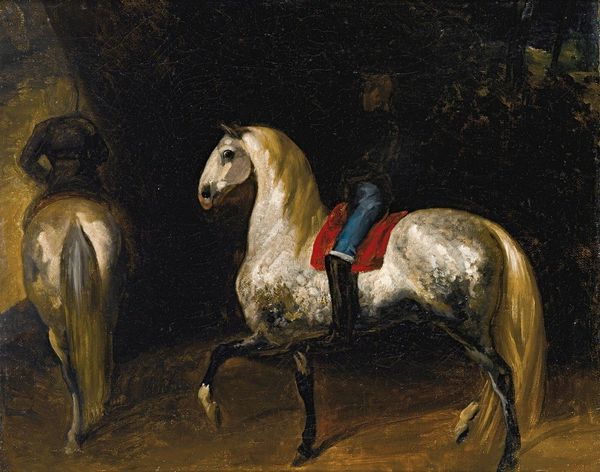
Lord Rivers’s Groom Leading a Chestnut Hunter towards a Coursing Party in Hampshire 1807
0:00
0:00
Dimensions: support: 660 x 625 mm frame: 849 x 788 x 90 mm
Copyright: CC-BY-NC-ND 4.0 DEED, Photo: Tate
Curator: Here we have Jacques Laurent Agasse's "Lord Rivers’s Groom Leading a Chestnut Hunter towards a Coursing Party in Hampshire," currently housed in the Tate Collections. The dimensions are approximately 66 by 63 centimeters. Editor: The first thing that strikes me is the colour; that reddish-brown hue across the horse is so dominant, almost unsettling, yet it’s also so captivating. Curator: Indeed. The horse, a potent symbol of status and power in British society, is rendered almost otherworldly by that colour. Agasse understood how to distill the essence of status into visual form. Editor: But it’s not just about status. Look at the groom; his back is turned, anonymous. The painting highlights a social structure, perhaps unintentionally, where individuals are defined by their roles in supporting the elite. Curator: It's a fascinating interplay of symbols, inviting us to decode the values embedded in this depiction of rural life. Editor: Absolutely, it is a very good piece to think about race and class.
Comments
tate 7 months ago
⋮
http://www.tate.org.uk/art/artworks/agasse-lord-riverss-groom-leading-a-chestnut-hunter-towards-a-coursing-party-in-hampshire-t02351
Join the conversation
Join millions of artists and users on Artera today and experience the ultimate creative platform.
tate 7 months ago
⋮
Agasse was influenced by his older contemporary George Stubbs who was the greatest of horse-painters. This can be seen in Agasse's highly polished technique and carefully balanced compositions. Like Stubbs, he attempted a broad range of sporting and animal subjects, including portraits of exotic beasts and rural scenes on the periphery of a sporting event. Here, Agasse focuses on the unusual pose of the horse and groom, viewed from behind, rather than on the action of the hare-coursing party seen in the distance. Agasse was Swiss-born but came to England in 1800 under the patronage of Lord Rivers, a noted sportsman. His estate at Stratfield Saye in Hampshire is the probable setting of this scene. Gallery label, August 2004
